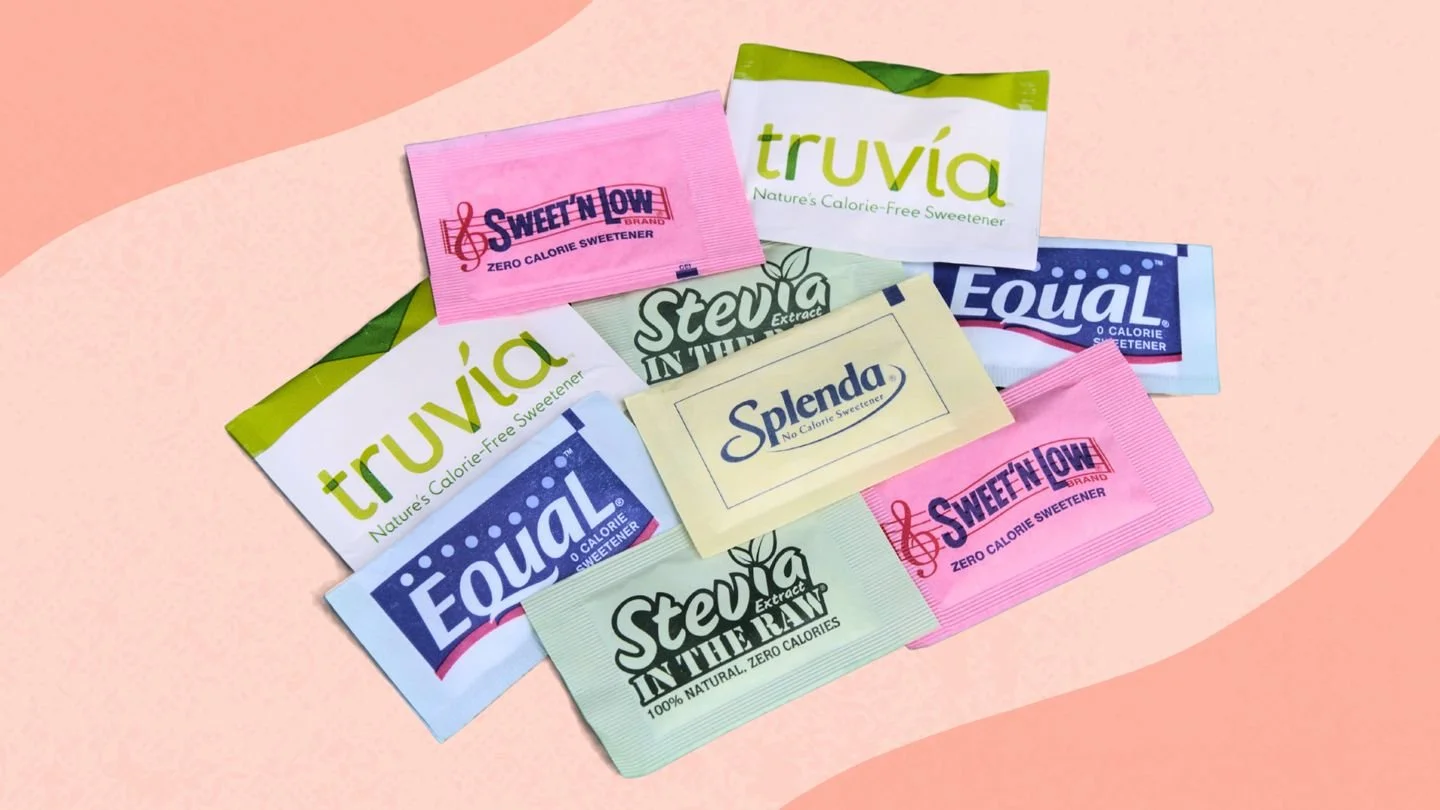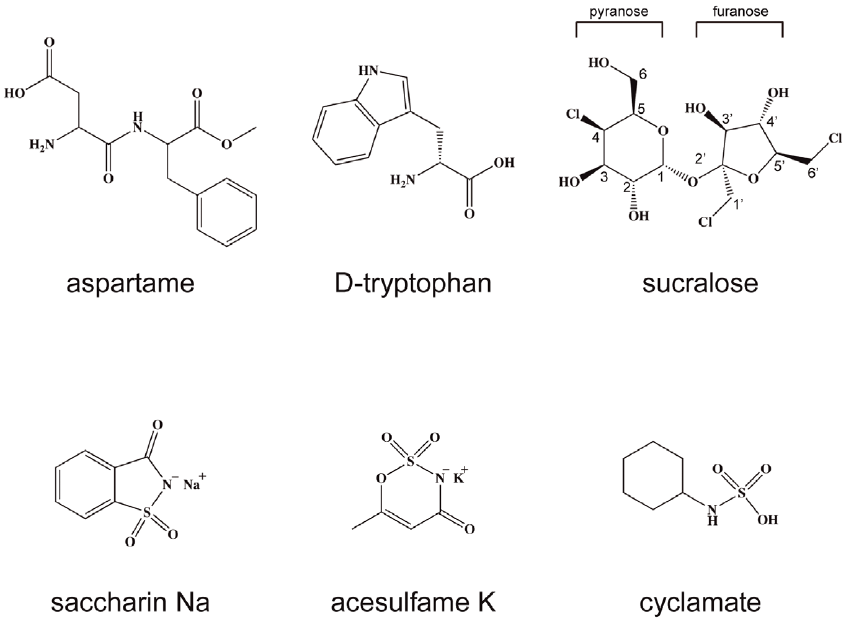Artificial Sweeteners
Sugars:
Sugar is a carbohydrate and one of the main items that gets burned as fuel. Athletes may drink or eat sugar-filled drinks or snacks to quickly replenish their energy storage, and they can even help performance on longer workouts. It is recommended that added sugars should be less than 10% of daily calories, so people who exercise may eat more sugar because they burn more calories than the average person. However, more weight-conscious people may choose to opt for something sugar-free as a way to save calories and lose weight.
Artificial Sweeteners:
Artificial sweeteners can help balance taste and calories, as some variants can be up to two hundred times as sweet as sugar, yet still have zero calories. Artificial sweeteners are used mostly by companies that are marketing a sugar-free food or drink, claiming to help weight loss and reduce the overall amount of calories consumed. They are otherwise called non-nutritive sweeteners, as they have no calories.
What the FDA thinks:
The FDA has approved six types of sweeteners: aspartame, acesulfame potassium, sucralose, neotame, advantame, and saccharin. While not technically validated, luo han guo and purified stevia leaf extracts are generally recognized as safe by the FDA. Some studies have shown that non-nutritive sweeteners may cause hunger and affect satiety levels, but no significant difference was discovered through these studies. While some media and generalizations can give artificial sweeteners a negative image, the recommended limit is still much higher than what the average person consumes (unless someone regularly eats a kilogram of artificial sweeteners a day).
Athletes:
For athletes, artificial sweeteners allow them to have the same taste of a drink, but without the same amount of carbohydrates as organic sugars. Additionally, as they contain less calories, an athlete can fill up their stomachs with more nutrient-dense foods like nuts, salmon, and more.
Conclusion:
There have been a few studies that showed a link between saccharin and bladder cancer in rats (none in humans so far), as well as research that showed bloating as a side effect of other types of artificial sweeteners. However, effects can only surface after large amounts of these sweeteners are consumed, though the upper limit varies from person to person. Generally, it's best to eat artificial sweeteners in moderate portions, much like all other foods.
Sources:
Laboratory, Exercise and Biochemical Nutrition. “Non-Nutritive Sweeteners: Implications for Consumption in... : Strength & Conditioning Journal.” LWW, journals.lww.com/nsca-scj/FullText/2019/08000/Non_nutritive_Sweeteners__Implications_for.11.aspx. Accessed 19 June 2024.
Editors, The SportsMD. “Are Low Calorie Sweeteners Good for Athletes?” SportsMD, 3 Apr. 2023, www.sportsmd.com/2023/04/02/are-low-calorie-sweeteners-good-for-athletes/.
“Pros and Cons of Artificial Sweeteners.” Mayo Clinic, Mayo Foundation for Medical Education and Research, 10 Jan. 2023, www.mayoclinic.org/healthy-lifestyle/nutrition-and-healthy-eating/in-depth/artificial-sweeteners/art-20046936.
Lawler, Moira, et al. “Artificial Sweeteners Guide: Nutrition, Benefits, Side Effects, and More.” EverydayHealth.Com, www.everydayhealth.com/diet-nutrition/artificial-sweeteners/guide/. Accessed 19 June 2024.
Chemical Structures of the Small Molecular Sweeteners Used in This... | Download Scientific Diagram, www.researchgate.net/figure/Chemical-structures-of-the-small-molecular-sweeteners-used-in-this-study_fig1_224847821. Accessed 20 June 2024.


